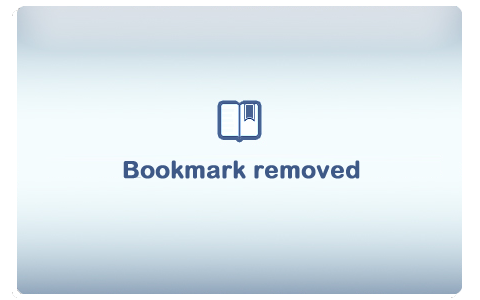Part 517 - Special Contracting Methods
Subpart 517.1 - Multi-year Contracting
517.208 Solicitation provisions and contract clauses.
(a) In addition to the multi-year authority described in FAR 17.101, GSA is authorized to enter into contracts for periods not to exceed– (1) Five years for the inspection, maintenance, and repair of fixed building equipment in federally owned buildings (40 U.S.C. 581(c)(6)); or (2) Ten years for public utility services (40 U.S.C. 501(b)(1)(B)). (b) Contracting officers may award contracts under the authority of paragraph (a)(1) or paragraph (a)(2) of this section without a cancellation clause. “Fixed equipment in federally-owned buildings” means all GSA mechanical equipment, including heating/cooling (geothermal), ventilation, electrical (wind/photovoltaic), elevator, escalator, and fire safety systems, components, and devices. Use of FAR 52.217-2, Cancellation Under Multi-year Contracts, is optional in multi-year contracts authorized by 40 U.S.C. 581(c)(6) for maintenance and repair of fixed equipment in federally-owned buildings and services and 40 U.S.C. 501(b)(1)(B) for public utility services. (a) Except as provided in paragraph (b) of this section, this subpart applies to contracts for supplies and services, including architect-engineer services. (b) Policies and procedures for the use of options in solicitation provisions and contract clauses for services involving construction, alteration, or repair (including dredging, excavating, and painting) of buildings, bridges, roads, or other kinds of real property are prescribed in 536.270. FAR subpart 17.2 and this subpart do not apply to the use of options in solicitation provisions and contract clauses for services involving construction, alteration, or repair (including dredging, excavating, and painting) of buildings, bridges, roads, or other kinds of real property. (a) Options may be used when they meet one or more of the following objectives: (1) Reduce procurement lead time and associated costs. (2) Ensure continuity of contract support. (3) Improve overall contractor performance. (4) Facilitate longer term contractual relationships with those contractors that continually meet or exceed quality performance expectations. (b) An option is normally in the Government’s interest in the following circumstances: (1) There is an anticipated need for additional supplies or services during the contract term. (2) When there is both a need for additional supplies or services beyond the basic contract period and the use of multi-year contracting authority is inappropriate. (3) There is a need for continuity of supply or service support. (c) An option shall not be used if the market price is likely to change substantially and an economic price adjustment clause inadequately protects the Government's interest. (a) Telecommunication contracts may not exceed 10 years per GSA Order ADM P 5450.39D, GSA Delegations of Authority Manual. (b) Public utility contracts are limited to 10 years (40 U.S.C. 501(b)(1)(B). (c) Requests to exceed 5-year limitation. A deviation request to exceed the 5-year limitation specified in FAR 17.204(e) must provide all the following information: (1) Clearly explain the contract(s) and organization(s) covered by the request. (2) Support the need for and reasonableness of the extension. Consider factors such as the following: (i) The results of market research. (ii) Stability of the requirement(s). (iii) Benefits to the Government. (iv) Use of a performance-based contracting approach. (v) Availability of funds to cover estimated cancellation costs as well as costs for the first contract period. (vi) Customary commercial practice. (vii) Mechanisms to adjust for economic fluctuations. (d) Approval authority. Deviation requests to exceed the 5-year limitations specified in FAR 17.204(e) must be approved by– (1) The head of the contracting activity for individual contracts; and (2) GSA’s Senior Procurement Executive for classes of contracts. In addition to the requirements of FAR 17.207, the contracting officer must also: (a) Document the contract file with the rationale for an extended contractual relationship if the contractor's performance rating under the contract is less than satisfactory. (b) Determine that the option price is fair and reasonable. (c) The consideration of other factors as prescribed by FAR 17.207(c)(3) should also include consideration of any tiered solutions (see subpart 507.71) or mandated solutions that were otherwise not available at the time of award. (a) For solicitations under Federal Acquisition Service’s Special Order Program, insert a provision substantially the same as the provision at 552.217-70, Evaluation of Options, if both of the following conditions apply: (1) The solicitation contains an option to extend the term of the contract. (2) The contract will be fixed price and contain an economic price adjustment clause. (b) Insert the provision at 552.217-71, Notice Regarding Option(s), or a similar provision, in solicitations that include an option for increased quantities of supplies or services or an option to extend. (a) General. (1) GSA provides interagency acquisition (IA) services to support the mission of federal agencies, foster competition and use of economies of scale, and provide options for agencies to meet their administrative and procurement needs. (2) The Office of Acquisition Policy maintains tools and resources for the acquisition workforce on the GSA Acquisition Portal (http://insite.gsa.gov/interagencyacquisition). (b) Cut-Off Dates. (1) Heads of Contracting Activities shall devise and publicize cut-off dates to accept interagency acquisitions for their respective organization(s) in support of this subpart. The decision to accept funds near the end of the fiscal year must be determined on a case-by-case basis taking into consideration the following at a minimum: (i) funding agency assurance that the funds are current; (ii) understanding of the type of funds (e.g. one-year, multi-year, no-year); (iii) time required for GSA to properly obligate the funds; and (iv) confirmation that the customer has submitted a “bona fide needs” statement. (2) Cut-off dates do not apply when accepting no-year funds. Cutoff dates do not apply to multi-year funds not near expiration. (3) Once accepted, GSA must expeditiously and diligently begin work on all IAs it accepts. (c) Reasonable Time. (1) Policy. When establishing interagency agreements, contracting activities must obligate funds in a reasonable time. (2) Definition. A reasonable time is considered to be 90 calendar days unless otherwise established in the interagency agreement. Contracting activities must examine with particular care if the 90 calendar day acquisition lead time can be achieved by: (i) using an existing contract or task/delivery order which can be awarded or modified expeditiously to meet the customer/funding agency’s requirement; and (ii) validating that the customer-specific fiscal policy attached to the funds (e.g., DoD 7000.14-R Financial Management Regulation Volume 11A Chapter 18) does not have any applicable restrictions which would prevent the use of 90 calendar days as a "reasonable time". (3) Criteria for establishing “reasonable time”. For IAs in which the contracting activity has determined the “reasonable time” to be in excess of 90 calendar days, the contracting officers must: (i) ensure that the “reasonable time” is mutually agreed upon and documented between the customer/funding agency and the GSA contracting activity at the time funds' are accepted (e.g., in the case of a DoD customer, signing DD Form 448-2, "Acceptance of MIPR"; for RWAs, date specified on GSA Form 2957, box 30B); (ii) ensure that the customer-specific fiscal policy restrictions are adhered to (e.g., DoD 7000.14-R Financial Management Regulation Volume 11A Chapter 18); and (iii) document the rationale for establishing a “reasonable time” which is in excess of 90 calendar days. (d) Periodic Reviews. Contracting officers must review all IA obligations for goods or services that have been ordered but not yet received (undelivered orders/unfilled customer orders) at fiscal year-end. Generally speaking, if the IA is for goods or services that were not delivered within the funds period of availability, the funds must be deobligated and current funds used, unless the goods could not be delivered because of delivery, production or manufacturing lead time, or unforeseen delays that are out of the control and not previously contemplated by the contracting parties at the time of contracting. (e) Order of Precedence. Any inconsistency in the applicability of customer agency and GSA policy shall be resolved by giving precedence in the following order when the customer agency’s policy is more restrictive, less restrictive or based on program authority specific to the customer. (1) The funding agency has a more restrictive policy than GSA. When the customer agency’s policy is more restrictive than GSA's policy, the contracting officer shall follow the more restrictive policy. (2) Higher dollar authority. When the customer agency’s policy is less restrictive than GSA’s policy, the contracting officer has discretion on which policy to follow. However, the contracting officer must consult with Service-level acquisition management (e.g., FAS OPC, PBS OAM) and OGC if following the Page 6 of 6 less restrictive policy to ensure GSA has adequate controls in place and has the authority to utilize the less restrictive policy. (3) Streamlined approach. In some circumstances funding agencies require less documentation for certain acquisition actions. (4) Specialty program authority. A number of agencies have authorities which GSA does not have. GSA cannot use a customer agency’s given program authority (e.g., Other Transaction Authority (OTA)) unless the authority is specifically delegated to GSA. If the contracting officer determines that the specialty program authority, not delegated to GSA formally, should be considered for use in an IA action, prepare an exception request for approval by the Senior Procurement Executive. (a) The requesting agency is responsible for the required information technology coordination and approval outlined in Federal Information and Technology Acquisition Reform Act (FITARA) (Pub L. No. 113-291) if the procurement involves information technology for the use of the requesting agency and not for GSA use. This requirement for CIO coordination by the requesting agency should be confirmed by GSA as the servicing agency by ensuring this CIO coordination requirement is documented in the interagency agreement or a separate document. (b) The requesting agency is responsible for identifying any special or higher level requirements for network connectivity (e.g. security, basic connectivity and communications) beyond the minimum Internet Protocol Version 6 (IPv6) requirements in FAR 11.002(g) for information technology that will have the capability to access the Internet or any network utilizing Internet protocol (IPv4 or IPv6). The special or higher level requirements as well as any deviation from the requirement in FAR 11.002(g) shall be documented in the interagency agreement. Subpart 517.1 - Multi-year Contracting
517.101 Authority.
517.103 Definitions.
517.109 Contract clauses.
Subpart 517.2 - Options
517.200 Scope of subpart.
517.202 Use of options.
517.203 [Reserved]
517.204 Contracts.
517.207 Exercise of options.
517.208 Solicitation provisions and contract clauses.
Subpart 517.5 - Interagency Acquisitions
517.502 Procedures.
517.502-70 Information Technology Procurements.

 FAR
FAR FAR Smart Matrix
FAR Smart Matrix DFARS
DFARS AFARS
AFARS AFFARS
AFFARS DARS
DARS DLAD
DLAD NMCARS
NMCARS SOFARS
SOFARS TRANSFARS
TRANSFARS AGAR
AGAR AIDAR
AIDAR CAR
CAR DEARS
DEARS DIARS
DIARS DOLARS
DOLARS DOSARS
DOSARS DTAR
DTAR EDAR
EDAR EPAAR
EPAAR FEHBAR
FEHBAR GSAM/R
GSAM/R HHSAR
HHSAR HSAR
HSAR HUDAR
HUDAR IAAR
IAAR JAR
JAR LIFAR
LIFAR NFS
NFS NRCAR
NRCAR TAR
TAR VAAR
VAAR

